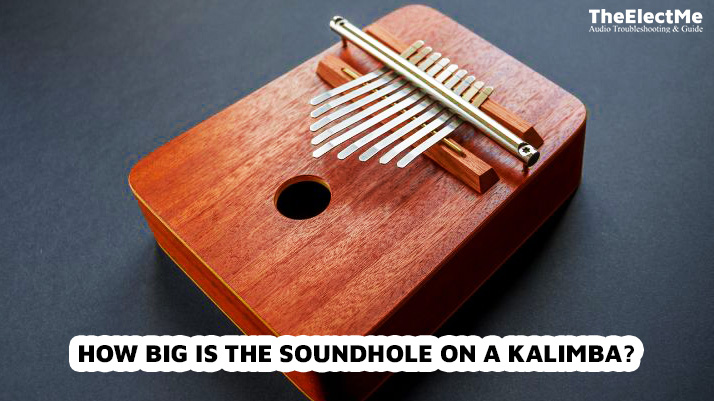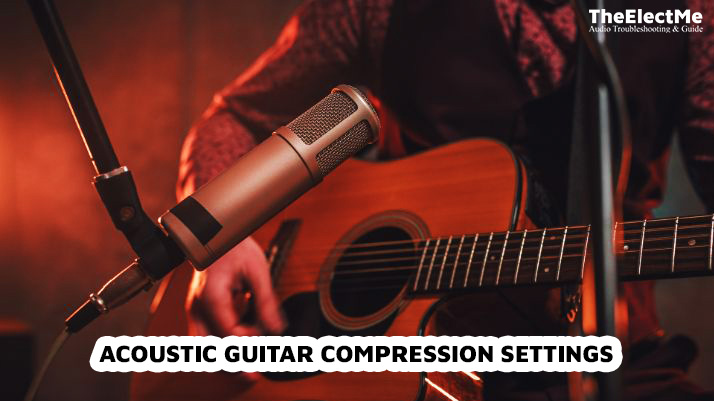How big is the soundhole on a Kalimba? The size of a soundhole on a Kalimba varies depending on the type and size of the instrument. Some kalimba have no soundhole, while others have a small or large one.
But what is the ideal size for a Kalimba soundhole? And how does it affect the sound produced by this unique instrument? To explore these questions, you must first understand what a soundhole is and its purpose.

This article will discuss the size of a soundhole on a Kalimba and its impact on the overall sound. You will also know about the factors that influence the size of a soundhole. So, let’s dive in and discover the world of Kalimba soundholes.
How Big Is The Soundhole On A Kalimba? Ideal Size for Optimal Sound
The average size of a kalimba can vary depending on the specific model and design. However, commonly available kalimbas range in size from approximately 7.25 x 5.25 x 1.38 inches to 9.17 x 7.8 x 3.54 inches.
The soundhole size on a kalimba can range from approximately 0.5 inches to 2 inches in diameter.
The average size can also vary based on the particular kalimba model. Let’s take the Hugh Tracey Kalimba, for example- the most common model with a soundhole size of 1.5 inches in diameter. On the other hand, some custom-made kalimbas can have a soundhole as large as 2 inches.
But what is considered an ideal size for a Kalimba soundhole? It ultimately depends on personal preference. Let’s explore the factors that influence the size of a soundhole in a kalimba.
What Factors Determine The Size Of A Soundhole On a Kalimba?
The size of a soundhole is an essential factor in determining the overall sound of a Kalimba. Here are some factors that can influence the size of a kalimba’s soundhole:
The size of the Kalimba
The main factor that determines the size of a soundhole is the size of the Kalimba. Larger kalimbas usually have larger soundholes for better resonance and projection. At the same time, smaller kalimbas may have smaller soundholes to keep the instrument compact.
The type of wood used
The type of wood used in making a Kalimba can also affect the ideal size of a soundhole. For instance, denser woods like mahogany or rosewood may have smaller soundholes.
On the other hand, softer woods like cedar or spruce may require a larger soundhole for better projection and tone.
The design of the instrument
The design of a Kalimba can also influence the size of its soundhole. For example, some kalimbas have multiple soundholes to produce a surround sound effect. In such cases, the overall size and placement of the soundholes are crucial in achieving the desired sound.
Tonality and Tonal Structure
The tonal structure and tonality of a kalimba are directly affected by the size and shape of the soundhole. Larger soundholes enhance the bass response and low-frequency tones.
On the other hand, smaller soundholes may emphasize midrange and higher frequencies. Depending on the desired sound, the size of the soundhole can be adjusted accordingly. You can also improve the sound quality of your speaker.
After you understand the factors that affect the size of a soundhole, let’s move to the techniques of measuring the size of a soundhole on a kalimba.

How To Measure The Size Of A Soundhole On a Kalimba?
Measuring the size of a soundhole on a kalimba is a simple task. Here are two methods you can use:
Ratio Method
One way to determine the ideal size of a soundhole is by using the ratio method. This method involves calculating the soundhole’s surface area and the instrument’s overall surface area. The ideal ratio is around 5% of the instrument’s surface area.
Measurement Method
Another way to measure the soundhole is using a measuring tape or ruler. Below are the steps to follow:
- First, measure the diameter of the soundhole.
- Then, measure the width and length of the kalimba’s body.
- Calculate the total surface area by multiplying the width and length measurements.
- Finally, compare the soundhole’s size to the total surface area. An ideal soundhole should be approximately 5% of this measurement.
So, using these methods, you can determine the ideal size of a soundhole for your kalimba. Let’s explore the benefits of soundhole on a kalimba sound.
Benefits Of Soundgole in Kalimba Sound
The soundhole is a vital component of a kalimba, and it serves multiple purposes. Here are some benefits of having a soundhole on your Kalimba:
Enhanced Resonance
Resonance is the vibrational energy that radiates from an instrument when played. The soundhole on a kalimba allows this energy to escape, resulting in a fuller and more resonant sound. If there was no soundhole, the energy would remain inside the kalimba. The result would be a muted and dull sound.
Better Projection
Having a soundhole on a Kalimba also helps to protect the instrument’s sound outward. A larger soundhole can improve the projection of a Kalimba. It ensures your kalimba’s sound remains audible.
Visual Appeal
Apart from its functional purposes, the soundhole on a kalimba also adds to its visual appeal. Many Kalimba makers design unique and intricate soundholes. These soundholes add to the instrument’s beauty and make it stand out. Furthermore, the Kalimba song also plays it.
Ventilation
The soundhole also serves as a ventilation system for the kalimba, allowing air to flow in and out. This is especially important for wooden kalimbas, as they can be affected by changes in temperature and humidity. The soundhole helps to regulate these conditions and prevent damage to the instrument.
Conclusion – How Big Is The Soundhole On A Kalimba?
To sum up, the size of a soundhole on a kalimba has numerous benefits. The soundhole significantly influences the overall sound of a kalimba by enhancing resonance, projection, and visual appeal.
While there is no one “ideal” size for a soundhole. It ultimately depends on the individual’s preferences and the factors mentioned above. With proper measurement techniques, you can determine the best size for your kalimba’s soundhole.
So, whether you have a large or small soundhole on your Kalimba, embrace its unique character and enjoy making beautiful music.



